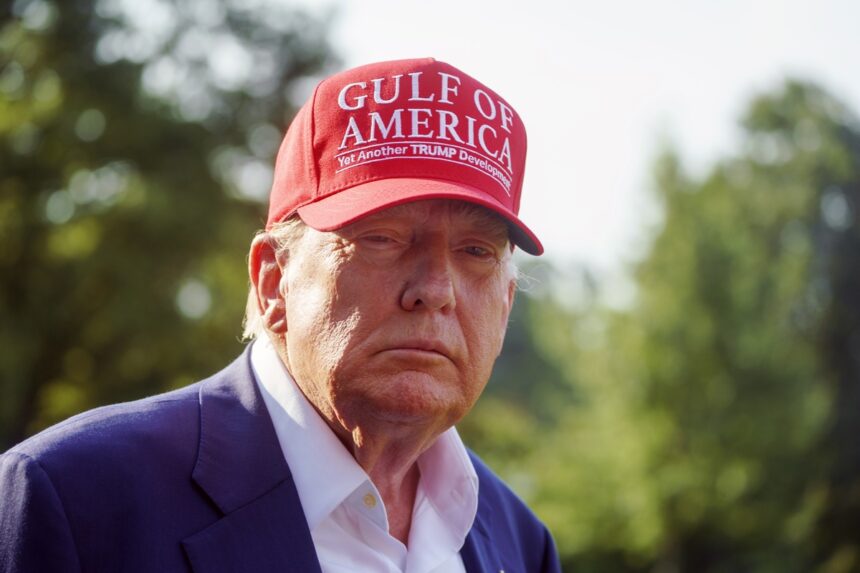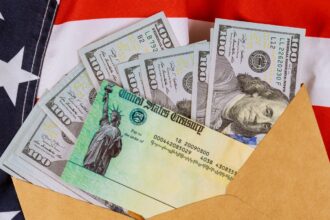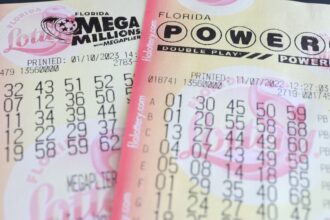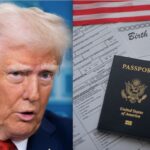U.S. President Donald Trump confirmed Wednesday, July 2, the signing of a new bilateral trade agreement with Vietnam, a pact that imposes new 20% tariffs on Vietnamese imports, tightens conditions to avoid circumventing taxes through third countries, and promises in return full access for U.S. companies to the Vietnamese market.
The announcement was made by the President himself through his official Truth Social account, where he described the pact as a sign of “great cooperation” between the two countries.
Trump announces agreement with Vietnam
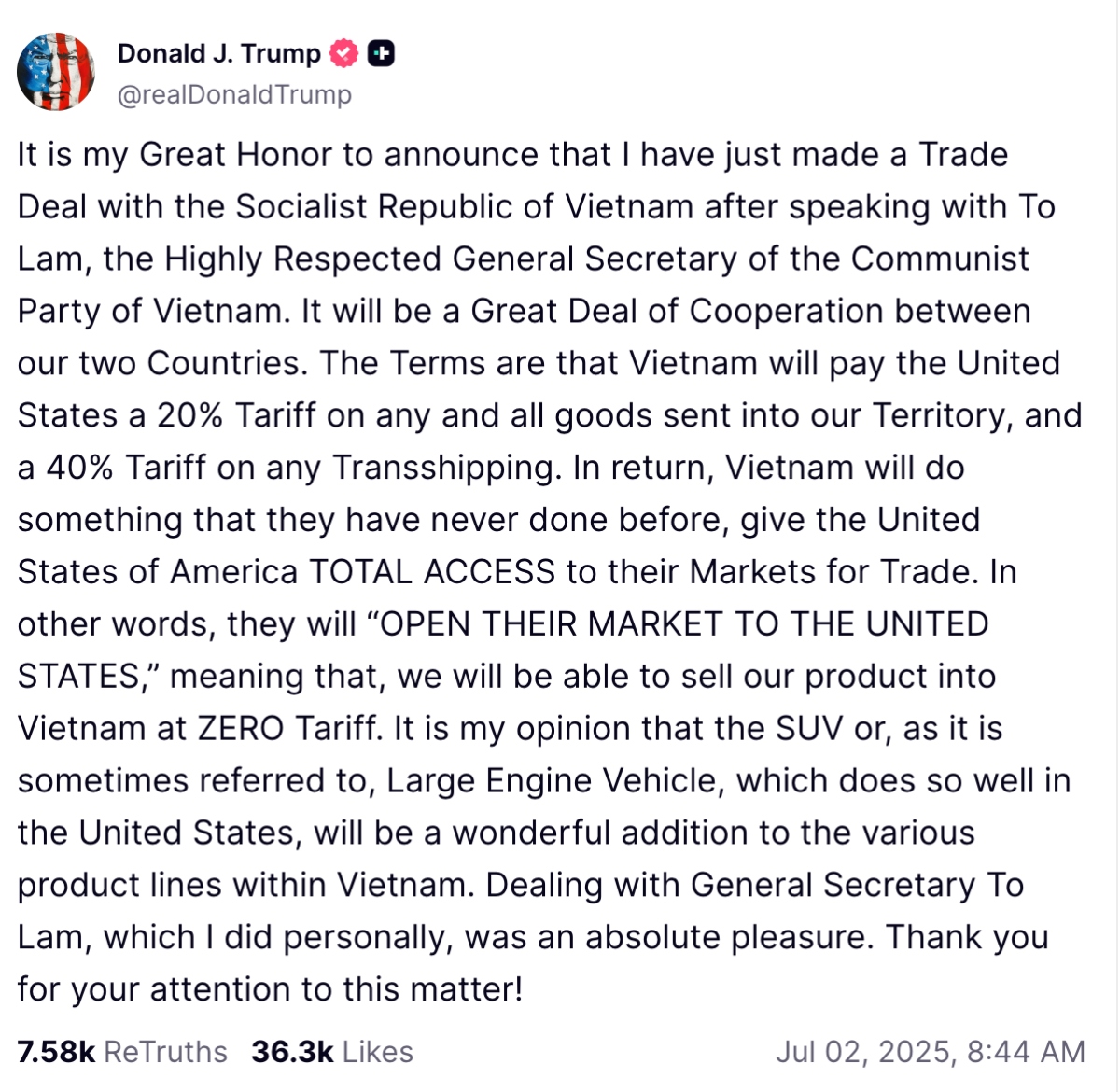
“The terms are that Vietnam will pay the U.S. a 20 percent tariff on all goods entering our territory,” Trump wrote.
In addition, a 40% tariff will be imposed on products arriving in the US from Vietnam via third countries, in order to avoid “transshipment”, a practice that has been used by Asian industries to avoid higher tariffs by disguising the country of origin of their products.
U.S. obtains full opening of Vietnamese market
As part of the deal, Trump assured that the U.S. gets an unprecedented windfall.
“Vietnam will do something unprecedented: it will grant the United States FULL ACCESS to its trade markets,” he said.
This would mean that U.S. products can be sold in Vietnam without facing import tariffs, which, according to the White House, will mainly favor the automotive, agricultural and technology sectors.
The president noted, as an example, that SUVs – very popular in the U.S. market – “will be a great addition to Vietnam’s diverse product lines,” hinting at a possible expansion of the U.S. automotive market in Southeast Asia.
Trump announces trade deal with Vietnam
Trump also stressed that the negotiations took place “on a personal basis” with Vietnam’s top leader, To Lam, secretary general of the ruling Communist Party, which the president said made it easier to reach a swift agreement.
He described the dialogue as a “real pleasure” and a sign of mutual respect between the two governments.
A pact within the framework of the tariff pause
This agreement is in addition to others that the Trump administration is seeking to close before July 9, 2025, the deadline announced in April for a temporary “tariff pause.”
With this pause, the so-called “reciprocal tariffs” were suspended, as a strategy to renegotiate more advantageous agreements for the United States.
White House spokeswoman Karoline Leavitt recently stated that the deadline is not inflexible.
“The president can simply offer a deal to these countries if they refuse to make us one before the deadline, and that means he can choose a reciprocal tariff rate that he deems advantageous to the U.S.,” he explained.
U.S. Trade Representative Jamieson Greer continues to lead negotiations with other economic partners, including South Korea, India, and Mexico.
According to Leavitt, Greer has held “productive discussions” in recent days, with the objective of consolidating new pacts before the deadline imposed by the Executive.
What does this mean for Hispanics in the U.S.?
For U.S. Hispanic consumers and entrepreneurs, this agreement may have impacts on several levels.
On the one hand, it is possible that the increase in tariffs on Vietnamese products -such as textiles, electronics and furniture- could lead to price increases in some trade sectors.
On the other hand, the opening of the Vietnamese market may represent opportunities for Latin exporters, especially in agriculture, manufacturing and technology, wishing to enter Asian markets.
Vietnam will do something unprecedented: it will grant the United States FULL ACCESS to its commercial markets



